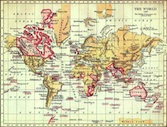
Paper 1 Assignment
Length: 3-4 typed, double-spaced pages (750-1000 words, but can be longer if you wish)
September 15: Typed rough draft due in class
September 17: Paper must be turned in at the beginning of class (paper version) or uploaded to Blackboard by 9 p.m. (electronic version)
Guidelines
- The first paper does not require research, although secondary sources may be helpful. Rather, its purpose is to demonstrate your ability to choose a significant, appropriately limited topic; to investigate and support a thesis of your own devising; to analyze with skill and insight the evidence from specific literary works; and to present the whole in a clearly organized, well-written fashion.
- The essay should incorporate at least one work read in class. You may choose your own topic for the paper if you consult with me ahead of time.
- Your paper should be limited enough to provide a specific thesis and a close analysis of the texts. R repeating broad, obvious generalities or ideas we have discussed in class will not be sufficient.
- Content is very important, but good organization, sentence structure, and editing skills are also important. Citations and the Works Cited page should follow MLA format. More guidelines for turning in papers in this class are here: http://public.wsu.edu/~campbelld/format.htm.
Topics
These topics are broad and are meant to suggest ideas to you; you should think about developing your own ideas using these as guidelines.
1. What is the view of nature in Transcendentalist and Romantic poetry? Choose a poem that we have discussed in class, such as "Tintern Abbey" or "This Lime-Tree Bower My Prison," and one that we have not read, such as Emerson's "Hamatreya," Keats's "To Autumn," or Shelley's "To a Skylark. " Analyze the two closely, paying particular attention to their view of nature. You could also choose to compare "Tintern Abbey" and "This Lime-Tree Bower My Prison."
2. Wordsworth, Coleridge, and Emerson ("The Poet") all have definite ideas about the role of the poet and the nature of poetry. Write an essay in which you analyze a poem that reveals one or more of their views of the poet.
3. Some contemporary critics portrayed Romantic ideas as idealistic at best and ridiculous at worst; Carroll's "The Aged, Aged Man" portrays the poet as self-absorbed and indifferent to true "low and rustic life," for example. Does Lyrical Ballads live up to Wordsworth's proclamations about what he and Coleridge are attempting? Analyze one or two poems in formulating your response.
4. Because of the Romantic emphasis on individualism and an individual voice, the poetic persona of the speaker in some of the poems we have read is striking if not always heroic. Is there a characteristic stance that the speaker takes in the poems we've read? Analyze one or two poems in light of the characterization of the speaker.
5. How do writers such as Byron, Ridge, and Douglass construct the idea of the Romantic hero? Is rebellion essential to his character? Does the American hero differ from the European version? Choosing one or two of the pieces we've read, construct your own definition of the hero and support it with close readings from the texts.
6. Choose at least one of the paintings of the Hudson River school and analyze it along with one of the more descriptive poems we've read, such as "This Lime-Tree Bower My Prison."
7. Compare one of the Romantic poems we’ve read with one from later in the 19th century, when Romanticism had given way to a preference for realism. Matthew Arnold’s “Dover Beach” (in course pack) and Thomas Hardy’s “The Darkling Thrush” would be two possibilities.
8. Choosing one of the issues raised by Mary Shelley's Frankenstein from the class exercise on the novel (available on the blog and here: http://www.wsu.edu/~campbelld/engl372/frankensteinexercise.htm), develop a thesis and write an essay in which you explore the two sides of the theme that you chose. For example, who is the victim and who is the villain in Frankenstein? Who is the monster?
9. Your own topic.
